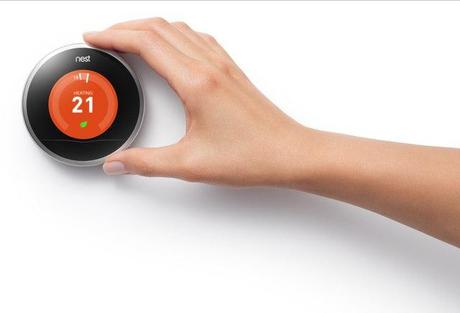According to Forbes, the smart home industry is expected to be worth nearly $8 billion by 2019, and already includes automated light switches, thermostats, and even pre-programmed household cleaning devices – so we may never have to turn to a professional or online resources for cleaning tips ever again. The question is, do these devices make life easier, or are they just creepy?
Home Automation and Robo-Maids

Truthfully, it’s a bit of both.Take Samsung’s revolutionary and innovative NaviBot, for example. This tiny (and kind of cute) little device is designed to not only replace your big, bulky vacuum cleaner, but it also aims to remove the need for traditional vacuuming altogether. How does it do it? By memorising the layout of your home, calculating the quickest and most efficient route, and sending itself off regularly to pick up dirt, dust, grime, and pesky pet hairs (it will even return to base when it needs recharging).
Creepy? A little. Genius? Definitely. If you can get over the idea that there’s a vacuum cleaner moving around your home of its own accord, you’ll soon see just how beneficial the Navibot really is. It’s discreet, it can vacuum even when you’re not at home, and, perhaps most importantly, it cleans in much the same way you would – by working out an efficient and effective plan before putting it into practice. It almost sounds too good to be true.
The Vast Internet of Things
It’s not just vacuum cleaners that have evolved in recent years from manually operated to fully automatic appliances. We’re now starting to see evidence of the ‘Internet of Things’, or IoT, within the home in all kinds of subtle ways. IoT is the concept of machine-to-machine, or M2M, technology – that is, it removes the need for human input almost completely. By programming one machine to talk to another, we’re being given a unique and somewhat futuristic opportunity to control, maintain, and manage our homes without ever having to lift a finger. Once again, this may make some of us uncomfortable, but it remains technologically amazing. So where are we starting to see M2M communications within smart homes?

One of the most notable forms of M2M communication in many smart homes today is the smart washing machine, which takes its cues from an app on either a smartphone or tablet PC device. The technology allows users to download advanced cycles and settings from the web, while the machine arranges these cycles in a specific order to wash each load in the most efficient and optimal way. It also pauses cycles during peak electricity hours to help reduce household bills, and offers a way of remotely checking on the cycle so you know exactly when you’re needed to unload. Unfortunately these smart washing machines aren’t quite clever enough to hang your washing on the line for you just yet –but with new developments coming all the time, who knows what the future may hold? There have even been reports recently that a British-based company is developing a washing machine that connects to the web to buy you more detergent when you’re running low!
There’s More to Smart Homes Than Meets the Eye
Smart homes have been the subject of some debate recently, with some voicing the opinion that self-sufficient home ecosystems are allowing homeowners to become complacent, and not put the proper effort into maintaining a happy and healthy home. However, this couldn’t be further from the truth. While there is no doubt that smart technology is making life easier, it’s about much more than convenience. It’s allowing us the chance to become more environmentally aware, to contribute to Government efforts to conserve energy, and it’s even helping us lower our annual household bills. So do you live in a smart home yet? Why not?
(photo credit: AllisonMatherly )

